|
Revolutionizing Beekeeping with Autonomous Technology
SeaBee Honey, a leading honey producer in New Hampshire, is at the forefront of beekeeping innovation with the introduction of FarmBots. These autonomous robots will revolutionize the way SeaBee Honey manages its apiaries, making beekeeping more efficient and sustainable. What are FarmBots? FarmBots are autonomous robots designed to perform a variety of tasks in agricultural settings. In the case of SeaBee Honey, FarmBots will be used to lift and move hives, inspect hives for pests and diseases, and pull honey frames. The bots are still in the prototype stage, but they have the potential to transform the beekeeping industry. How will FarmBots be used at SeaBee Honey? SeaBee Honey will initially use FarmBots to manage a small number of apiaries. The bots will be controlled remotely and will provide real-time data back to a centralized hub. This data will be used to monitor the health of the hives and to identify potential problems. SeaBee Honey believes that FarmBots can help to address the challenges facing the beekeeping industry, such as colony collapse disorder and varroa mite infestation. The bots can also help to reduce the labor required to manage apiaries, making beekeeping more sustainable. What are the benefits of using FarmBots? There are many potential benefits of using FarmBots to manage apiaries. These benefits include:
SeaBee Honey believes that FarmBots have the potential to revolutionize the beekeeping industry. The company is committed to developing and using this technology to improve the health and productivity of its bees. Stay tuned to learn more.
1 Comment
A World of Colors: Unveiling the Bee's Vision
Honey bees possess a remarkable ability to perceive the world around them and it is an amazing view of the world they possess. While their vision may differ significantly from ours, it is equally intricate and fascinating. Unlike us, who perceive colors through a combination of red, green, and blue receptors, honey bees rely on a trio of ultraviolet, blue, and green receptors. This unique perspective allows them to navigate and interact with their environment in ways we can only imagine. A Spectrum Beyond Human Perception The ultraviolet spectrum, invisible to human eyes, holds a wealth of information for honey bees. It guides them to nectar-rich flowers, as many blooms reflect ultraviolet light more intensely than their surroundings. This ability is crucial for bees' survival, as it ensures they can efficiently gather food for themselves and their hives. A Floral Palette While bees cannot perceive the color red, they can distinguish between a range of colors that overlap with the human visual spectrum. They are particularly drawn to blue, green, and yellow, colors that often signal the presence of nectar-rich flowers. This preference is reflected in the vibrant hues of wildflowers that dot our landscapes, a testament to the coevolutionary relationship between bees and plants. A World of Contrast In addition to color, bees are also sensitive to contrast. They can detect subtle differences in brightness and shading, allowing them to identify objects and patterns against their surroundings. This ability is essential for tasks such as locating their hive entrance and distinguishing between different types of flowers. In many cases, we paint the front of our hive boxes in bee-friendly colors in designs that help foragers identify their homes more easily. Protecting Our Pollinators As we appreciate the intricate world of bee vision, it is crucial to recognize the threats these remarkable creatures face. Pesticide use, habitat loss, and climate change all pose significant challenges to bee populations. By taking steps to protect pollinators, we safeguard not only their existence but also the delicate balance of our ecosystems. The honey bee's vision, though different from our own, is a testament to the diversity and adaptability of life on Earth. By understanding how bees perceive the world around them, we gain a deeper appreciation for their role as pollinators and the importance of preserving their vital contributions to our planet. SeaBee Honey: A Sweet Substitute for Sugar
In the past few years, there has been a growing trend towards using natural sweeteners in cooking. Honey, a natural sweetener produced by bees from the nectar of flowers, has emerged as a popular alternative to refined sugar. Not only does honey offer a unique flavor and aroma, but it also boasts several health benefits. Honey vs. Sugar: A Tale of Two Sweeteners While both honey and sugar provide sweetness, they differ significantly in their composition and properties. Sugar, a refined carbohydrate, is mainly composed of sucrose, a disaccharide of fructose and glucose. Honey, on the other hand, is a complex mixture of sugars, including fructose, glucose, and other minor sugars. Additionally, honey contains trace amounts of vitamins, minerals, and enzymes. Sweetness Comparison When substituting honey for sugar in cooking, it's important to consider their relative sweetness. Honey is approximately 1.7 times sweeter than granulated sugar. This means that for every cup of granulated sugar called for in a recipe, you can substitute about 2/3 cup of honey. General Guidelines for Substituting Honey for Sugar Here are some general guidelines for substituting honey for sugar in cooking:
Join us on Wednesday, April 26 at 6:30 p.m. for a presentation by Joe Marttila of SeaBee Honey and Apiaries. SeaBee is based in Rye with the mission to preserve both pollinators and farmland in the Seacoast area. Joe Marttila will give you a fascinating glimpse into the world of honey bees and other New England native pollinators, and explain why pollinators play such a critical role in the ecosystem. He will also touch on why pollinators are in decline and what you can do to help.
SeaBee Honey will have a limited number of package bees available in April 2023. They will be Italian Honey bees with unmarked queens. Please contact 603-682-7898 to inquire about ordering.
We will be offering a honey-tasting seminar and an overview of how we process our SeaBee traceable honey and traceable beeswax. The session will concentrate on how honeybees create honey, the SeaBee honey extraction process, and the different flavors of honey. SeaBee honey is one of the few honey producers that provides traceability of their honey down to the exact apiary and hive that produced it. There will be tastings of some of these traceable honeys produced by SeaBee at this event. This session will be sponsored by Rye Recreation and sign-up details can be found on the town of Rye website. The event will occur on January 12, 2023.
On October 7th, the SeaBee Honey team assisted with our friends from the Center for Wildlife hosted the 4th graders from the Dondero School in Portsmouth, NH. We have had visitors to this active apiary but never this many!
We scheduled the day for October since we thought the weather would be cooler and we would have less bees buzzing about but the weather was warm and clear with the bees flying out and about. We had lot of activities set up for the students and they were able to visit different stations where they could actively explore the plants and pollinators found in the habitat. The Center of Wildlife brought down their ambassador screech owl for the event. After the students finished with the stations we brought them up to one of the main fields that was teeming with pollinators and late season flowers. The flowers in bloom included golden rod, asters, coreopsis, some clover and autumn hawkbit. We identified numerous pollinators and did a short discussion on the geology of the pollinator habitat which is a glacial esker. The tour finished with a tour of the SeaBee Honey house where the student were able to see how we processed our traceable honey and beeswax. The kids were able to see the machinery we use to process and bottle our honey and it was a great finale of the day. This was our final major tour of the pollinator sanctuary and we look forward to resuming corporate and school tours in 2023. SeaBee Honey will be presenting at the 20th Annual BioBlitz at the Seacoast Science Center on October 1, 2022. BioBlitz is an annual Community Science event where families and experts alike explore, discover, and document the biodiversity of Odiorne Point State Park.
We will be presenting on pollinators and the challenges they face at 1130 am. The rest of the agenda is as follows Join us on Saturday, July 30th from 9-12
Tour the beautiful grounds of Saltbox Farm and learn from special guest Seabee Honey on how pollinators are critical to agriculture. Joe Marttila will discuss how they are using pollinators and technology to help better pollinate blueberries and apples. Joe will also discuss how they have developed a software solution to provide traceability for their honey and beeswax products. Acres of blueberries and raspberries are plentiful and ready for picking every Tuesday - Sunday 8 to 5. You can also pick up a pint or quart in the farm stand. The Farm Stand is full of amazing products. Freshly made bakery items featuring Irma's famous blueberry muffins. Local Syrup and Honey made from some of our own blueberries! Sweet Grass Farm soaps and lotions. Duane Bean hand screened towels and cards. Farm inspired pottery and some amazing pieces from the Chive collection. And, the raised beds have started to produce brilliant sunflowers and veggies! We are often asked why we provide a label on our honey that it should not be fed to children under one year of age. Here is why.....
Honey can contain spores of a bacteria called Clostridium botulinum, which can cause infant botulism. Infant botulism is a rare but serious illness that can cause muscle weakness, paralysis, and even death. It is most common in babies under the age of six months, but it can occur in any baby under one year of age. The botulism spores in honey are harmless to adults and older children because their digestive systems have developed enough to prevent the spores from germinating and producing the botulism toxin. However, babies under one year of age do not have this protection, so they are at risk of developing infant botulism if they eat honey. Symptoms of infant botulism can include constipation, weakness, floppiness, poor sucking, a weak cry, and difficulty breathing. If you are concerned that your baby may have infant botulism, it is important to seek medical attention immediately. To prevent infant botulism, it is important to avoid giving honey to babies under one year of age. This includes not putting honey on pacifiers, nipples, or food. You should also avoid giving your baby any processed foods that contain honey, such as honey graham crackers or sweetened tea. If you have any questions about infant botulism, please talk to your doctor. The warm weather is here early this season and your instinct is to get out and clean up your garden and the leftover leaves you missed in the Fall. While you get ready for Spring there are many native pollinators that are still dormant waiting for a few more weeks when our weather is consistently in the 50s. This is when native pollinators will take flight and get busy working to build up their colonies. Sure the honey bees are flying but they have a much different survival methodology than our native pollinators. Native Pollinators are AnnualsIf we think of pollinators like our garden plants then it is safe to classify native pollinators as annuals where honeybees can be classified as perennials. Our native pollinators include bumble bees, mason bees, carpenter bees, and mining bees to name a few. These bees will spend the warmer months building their nests and raising brood in small hives or communities of other bees. These native pollinators are important partners in the growing cycle to many of the plants, fruits and vegetables we cherish. When it gets cooler in the Fall their offspring will look for burrows to spend the Winter and repeat the cycle in the Spring. Many of these pollinators seek burrows in the stalks of dead plants, under leaf piles, holes in timber, and the relative warmth of your garden soil where there are many pockets to be protected from the hard cold of the Winter months. Garden CLEAN-UP Tips to Protect PollinatorsIf you are cleaning up your garden due so carefully. Here are some hints that we tell gardeners to follow:
We hope these tips can help you start your gardening for 2022 off on the right foot. Please feel free to contact us if you have any pollinator questions.
Buckwheat on the SeacoastBuckwheat has to be one of my favorite plants for pollinators and while I may like it, the bees love it. I have had luck growing it myself as a cover crop, one year at the Goss Farm in Rye, NH, and have been lucky to work with farmers like Jack Clarke in Epping/Lee who planted it as part of his crop rotation. A few years ago, I was driving by the Governor Dale Farm in North Hampton when I saw a massive crop just starting to flower and I just needed to stop and ask if I could place some hives there. Josh the farmer had planted it as a cover crop and I received his permission as well as the ok from the owners of the land (Jacqui and Hank). We were able to get some good buckwheat flavors from that honey but not a mono-floral harvest that was solely buckwheat. This past year, Josh planted another cover crop and the bees were able to store away some frames of the dark nectar that was mostly buckwheat honey. Buckwheat (Fagopyrum esculentum) has been around for a long time and is not a native plant to North America. It originated in Asia and spread to Europe and eventually was brought to the Americas by the Europeans. Here in the Northeast of the United States it was once a common crop but has been replaced by other grain crops like corn and soybean. The buckwheat plant produces a white flower that eventually produces a triangular seed that looks a bit like a colonial hat. The seed is easy to collect and can be ground into flour. Buckwheat Nectar and Honey Buckwheat plants are quick to grow and will in about 10 weeks. When the flower has blossomed the plant will put out nectar for only a short duration of the day. We have observed this at many of our locations where the bees will work the crop in the morning for nectar and the afternoon for pollen only. The bees have no choice since the plant is the one shutting down the nectar flow. When the bees collect enough nectar they bring it back to the hive and store it in the honeycomb where it goes through the process of becoming honey. In most cases, that honey is mixed in with other late-season nectars like goldenrod, aster, purple loosestrife, and knotweed. The combination of these nectars makes for very dark and rich honey that you will find in our late summer bottles. In rare cases, we have frames of exclusive buckwheat you will find that the honey is extremely dark and has a rich molasses-like flavor with some straw-like after notes. Some people actually will get a barnyard type of smell/taste from their experience. I can see that but more often I prefer the description I hear when people try it is malty. I love people's reactions when they try this honey after we have tried much lighter ones and worked our way up to it.
Are you looking to plant buckwheat this season? If you need any pollinators to help the crop please reach out to us and we can see about dropping a hive off to help you with your crop. First Pollen of 2022 reported in Seacoast, NHOn February 23, 2022, the temperatures in the Seacoast area of New Hampshire reached well above 60 degrees and our bees, in various apiaries, were flying and bringing in some heavy pollen loads. The Little Harbor apiary in Portsmouth showed two different types of pollen coming in that couldn't be identified (we let the bees keep this important resource at this time of season) but looked to be either willow, maple, and/or crocus. The Little Boar's Head apiary in North Hampton, had a great amount of pollen coming in and this pollen looked to be Witch Hazel that is blossoming in the area around the apiary. Some people will say this isn't a normal occurrence but it is something we have seen in past years and it is normal for Witch Hazel to bloom in the late wintertime period. Why is Pollen Needed?Pollen is critical to the beehive because it provides a critical protein resource for the colony. Pollen was last collected by the hive in the Fall and unlike honey, it has a shelf life. While some of the pollen collected late in the Fall can still be viable there isn't as much left in many of the hives or it may have spoiled. So a fresh source is a welcome site for the hive and beekeeper alike. We typically provide pollen patties at this time of the season to help kick start the hives protein supply. What happens from Here?As the season continues and temperatures return to normal levels the bees will hunker down again and use their resources to continue with brood development. As things get warmer, more and more plants will start to produce pollen and soon some will have some early nectar flows. Beekeepers and pollinators are eagerly awaiting these days.
As a child, I remember a large milkweed field in Hampton that we would walk thru each day on our way to Marston School. In the early Fall, the field would be full of milkweed and also monarch butterflies that were making their migratory trip to Mexico from New England. Milkweed plants would have butterflies on them as they fed on the gooey white sap that the milkweed plants produced. That beautiful field on Mill Road now has a large home in the middle of it and maybe a few milkweed plants here and there but I am betting it doesn't have a tenth of the milkweed plants it did when it was a meadow.
Milkweed is a critical plant to monarchs since it is one of their primary food sources and provides homes for the monarch in the summer. Adult monarchs will lay eggs on the underside of the leathery leaves of the milkweed plant, where they will hatch into a caterpillar and feed on the plant. The caterpillar will then form a cocoon on the plant and hatch into a butterfly which will feed on the blossoms and subsequent milkweed pods that develop from them. Milkweed blossoms are also large nectar producers and are worked by other pollinators including honey bees that will risk becoming entrapped by the sticky resin the plant produces to collect the nectar. Honey bees love milkweed as do many other native pollinators. We have worked with many landowners to plant milkweed fields or help expand their current fields. On Goss Farm in Rye, NH we protected one plant from mowing years ago and it has now developed into a small patch of around 50 plants. Once the milkweed gets established it will expand underground via rhizomes and it can quickly overtake gardens if you don't manage it. I put a few plants in one of our gardens and it has taken over the space. However, after one season we had monarch butterflies visiting and nesting on the stalks. It is an incredible sight to see. Another way to plant a milkweed field is to collect the dried pods and stalks from existing plants. Joe Tucker and I collected plants from a large milkweed field in North Hampton thanks to the property owner Greg's permission. Greg's field was a horse paddock about ten years ago and he nursed the field back to a wildflower pollinator habitat where milkweed spread from a few plants to many over a few years. Greg's field was the largest field of milkweed I had seen since that field off Mill Road in Hampton. Joe and I cut the stalks with their pods on a November day and brought them over to a section of his pollinator habitat in Rye. We used a rod to punch holes into the ground and placed a stalk into each hole about 8 or so feet apart. That winter the pods would release the silken seeds that would float down into the 8-acre field. The next spring season we saw milkweed plants starting to take root. After a year we had numerous milkweed plants spread throughout the pollinator habitat and the monarchs showed up once the plants were established. This last year we had hundreds of monarchs flying in the field in the middle of the summer and have countless more stopping to feed on the milkweed during the migration in the fall. Would you like to have help setting up a milkweed field? Feel free to contact us at [email protected] to learn more. Starting in 2022 we have set up our beeswax to be traceable using the SeaBee Honey Tracer™ built on the Farms to Carts™ platform. We did some test runs with 2021 beeswax and it worked out very well. The attributes we track on beeswax are a bit different than what we track for our honey but the idea is the same. We want to provide our consumers with the best tracking they can have about our beeswax and the Honey Tracer makes it very easy to accomplish this task. Just like with our honey, the user can scan the QR code on the package or invoice and they will immediately be provided with the key attributes of the beeswax including: apiary, date rendered, farm, type of beeswax and color. Many of the makers that use our product are welcome to share the QR we provided in their packaging to help ensure that their customers know they are receiving a locally produced beeswax and if not local, they will know where it comes from and have the understanding that the product is 100% pure. We have some exciting new developments with our Honey Tracer coming in 2022 that will provide even more transparency and traceability in our products.
Recently, we had a great Zoom meeting with the folks from the Great Island Garden Club of New Castle, NH. The Great Island Garden Club's mission is as follows:
The purpose of the Great Island Garden Club shall be to stimulate the knowledge and love of gardening and horticulture while assisting in community beautification. How great is that for a mission statement? We provided an overview of our company and discussed the challenges of keeping bees here in the Seacoast of New Hampshire. We did discuss the success of the hives we have located in and around New Castle and how we have worked with the schools in the area on education initiatives. It was a great event and we appreciated the excellent questions from the group. Technology can be great but only if you know how to use it. Some folks have asked us how to scan the QR code found on the back of our label. First, let's cover a few basics. What is a QR Code?QR is short for Quick Response. It was developed in 1994 by a Japanese automotive company called Denso Wave. It is a type of bar code but it can store much more data. The QR Code usually has a tracker associated with it - the tracker in most cases points to a website or software application. QR codes are machine readable. How to scan our productYou only need a smartphone with a camera to scan a QR code.
Step 1: Turn on the camera on your smartphone. Step 2: Focus the camera on the QR code. Step 3: The camera will recognize the QR code and with a link to Farms to Carts™ Step 4: Click Yes and you will see the information on our product. Try it out on the QR code above and you will be brought to a panel that describes all the information of a package of our beeswax. Please let us know if you have any questions of comments. For years we have included our batch number on our labels but it could only provide so much information to the consumer. The label on our product and others can only hold so much information and we wanted to provide more traceability to the consumer. We also wanted to provide a flavor profile for each batch of honey bottled so that the consumer would know the subtle nuances and flavors in our honey that vary from year to year and hive to hive.
With that purpose in mind we, worked with Pharmonic Solutions™ to build out a proprietary software solution called Farms to Carts™ that allows companies like ours to provide transparency and traceability to their consumers. Farms to Carts allows the user to easily create shareable product attributes, transfer the data into user-created tables, and generate QR labels that can be affixed to labels and marketing materials as required. We have used our Farms to Carts platform, called SeaBee Honey Tracker, for our honey and wax products since this summer. However, it can be used for so much more. If you want to learn more you can contact us or the Farms to Carts team at the following. Email Farms to Carts. We are offering limited hive sponsorships (adopt a hive) for 2022. This is a great way for your corporation to keep bees and pollinators without putting a hive in the office or corporate location. We can do that as well if you have a large enough corporate campus but most companies are located in high traffic areas where other companies are located. Our hive sponsorship is as follows:
Our Hive Sponsorship Includes the following: - All the hive equipment and honey bees that will make up your hive - Your selection of the apiary where your hive will be located - A video update of your hive - Your company logo placed on the hive - A 1 hour live overview of the hive via video conference or live demonstration - A portion of the honey produced in your hive, bottled with your company logo 2022 Pricing - Please click here and send us an email to learn more. Seabee Honey to Provide Honey Extraction Services in 2022We have had many requests from local beekeepers to help process their harvests. For various reasons we have denied these requests until now. Starting in 2022 we will offer extraction services using our professional equipment in our specially designed honey house in Rye, NH. This service will be provided to local beekeepers in our operating area and will require the honey and hives to be inspected prior to bringing the honey to our site. We will not accept any honey from outside our region and we will also limit the number of frames. Beekeepers will be able to supervise the extraction process but will not be able to run any of our equipment of take part in any of the uncapping. It may seem like overkill but this is the process we want to offer and while it is stringent it is worth the wait. To learn more please contact us at [email protected]
Recently, we had a request to place an educational hive at a school we have provided pollination presentations to in the past. The Little Harbour Elementary School is located in Portsmouth, NH and borders Little Harbor here on the New Hampshire Seacoast. The group at the school wanted a hive on site to help with their STEM education program. After meeting with the team at the school we decided to place an existing hive along the shoreline that borders the school.
The hive location required us transporting the full hive from another site, across a field, down some stairs on a dock and along some wet marsh. The move was performed during the weekend when no teachers or faculty would be around. The bees took to the location very well and were able to work a large area of golden rod and aster that surround the harbor. Since this post, we have had over 5 presentations from grades 1-5 where we used the bees from this hive to help educate the students. We look forward to working with LHS and our other schools in the coming year. We had a great overview of our business and the fight to preserve both pollinators and farmlands here in the Seacoast of New Hampshire to the Portsmouth Rotary today. It was a great group of people that had some really in-depth and thoughtful questions. We also brought along an observation hive for the members to view.
The event was held at the Portsmouth Country Club which was a bit ironic since we aren't the biggest fans of country clubs, fairways and greens that are usually barren of any significant forage for pollinators. In fact, many of the area golf courses were built on dairy farms that were once a big part of the landscape of the Seacoast. Putting that aside, we reviewed the goals of SeaBee Honey with the team and provided an overview of the pollinators of our region and how folks can help both honey bees and native pollinators thrive. All and all, it was a great event and the audience was engaged in our discussion on this beautiful fall day. As I left the club, I looked out to one of the fairways and thought what a great place for some clover.;) |
Details
SEABEE HONEY BLOGAuthorA beekeeper in New Hampshire [email protected] Archives
December 2023
Categories
All
|
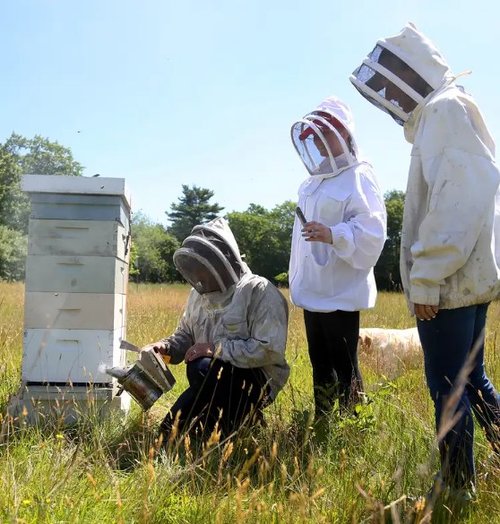
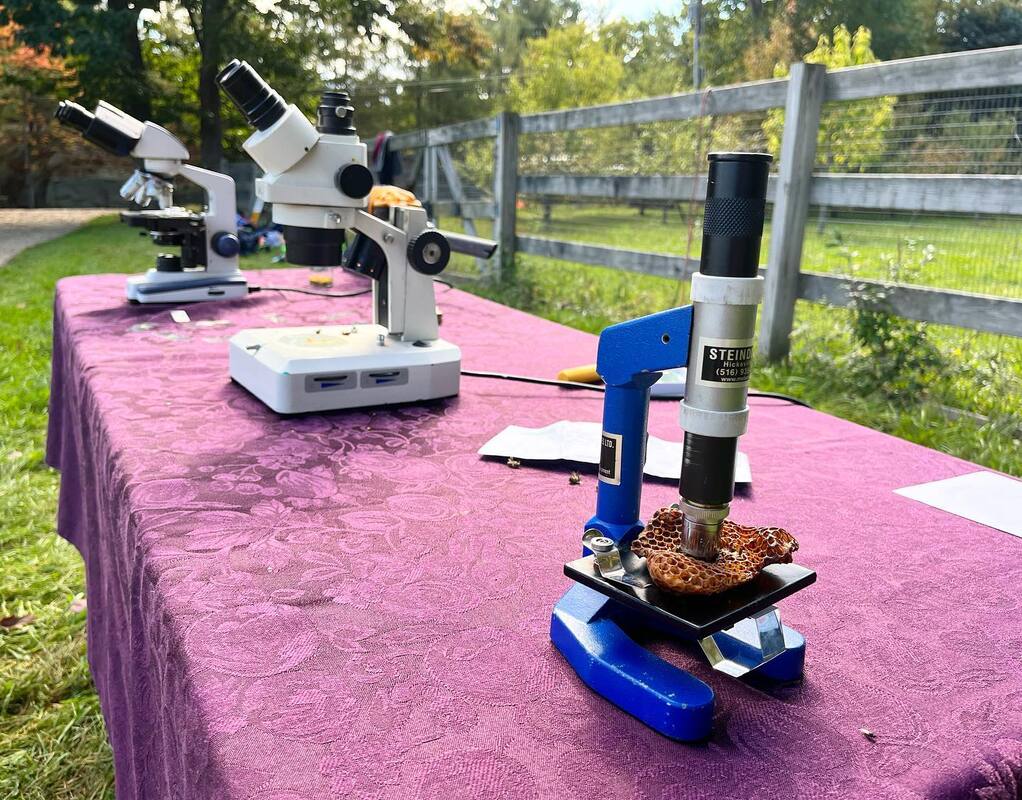
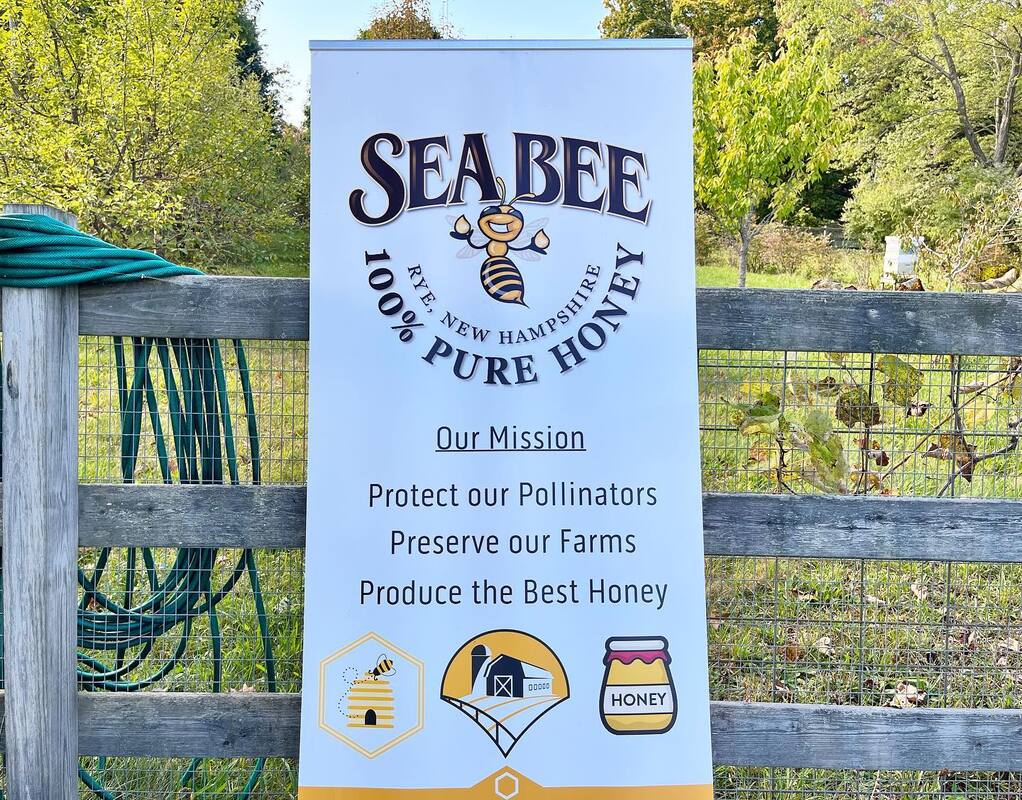
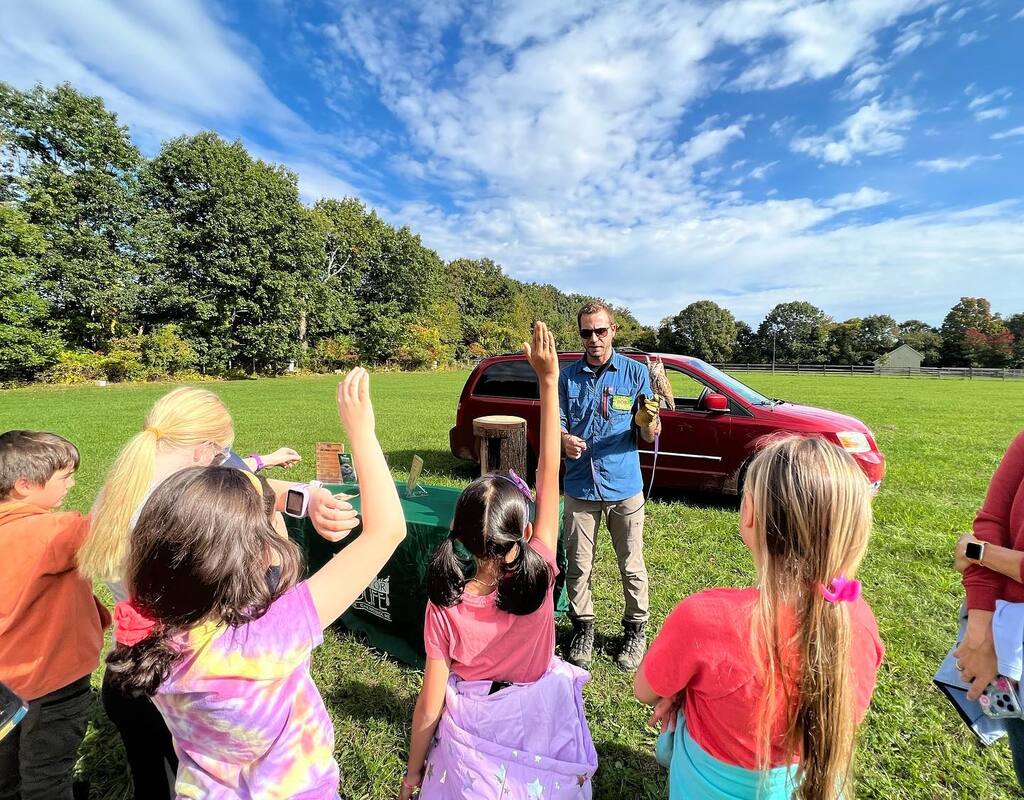
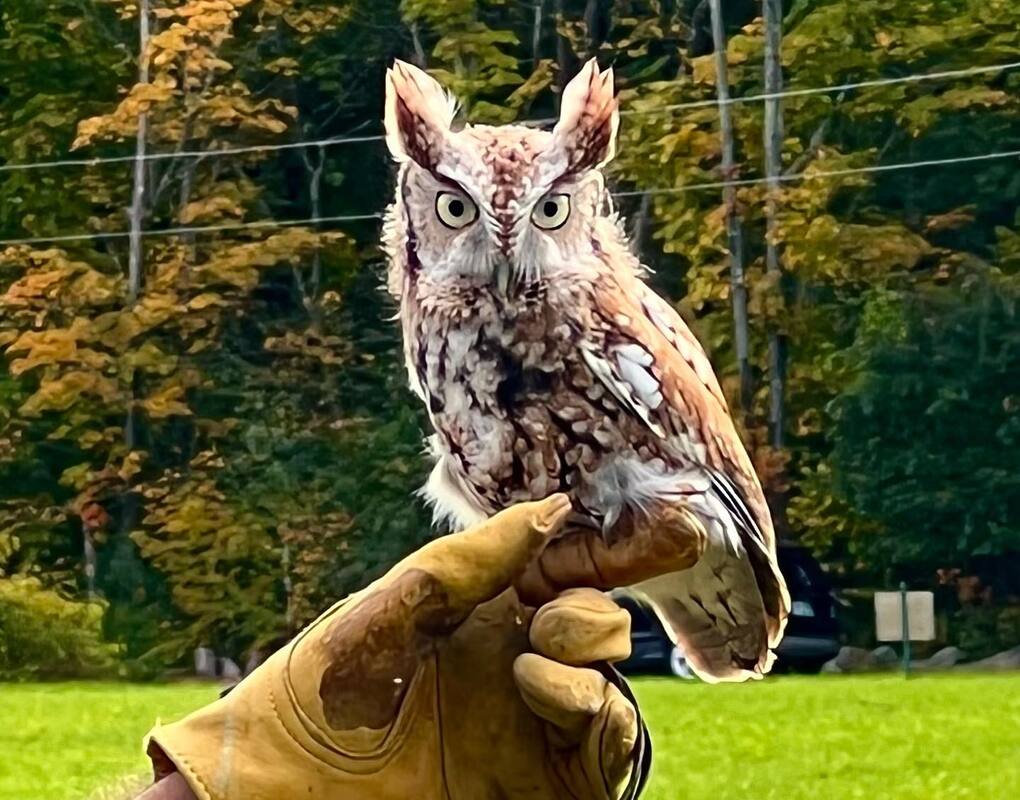
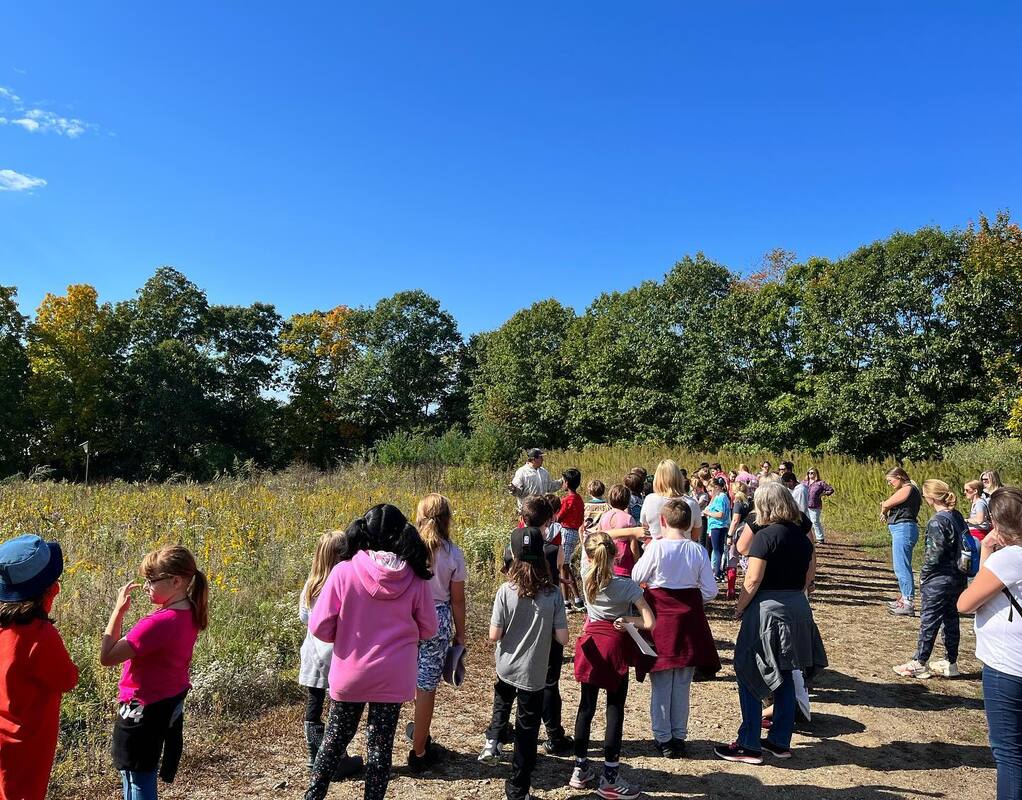
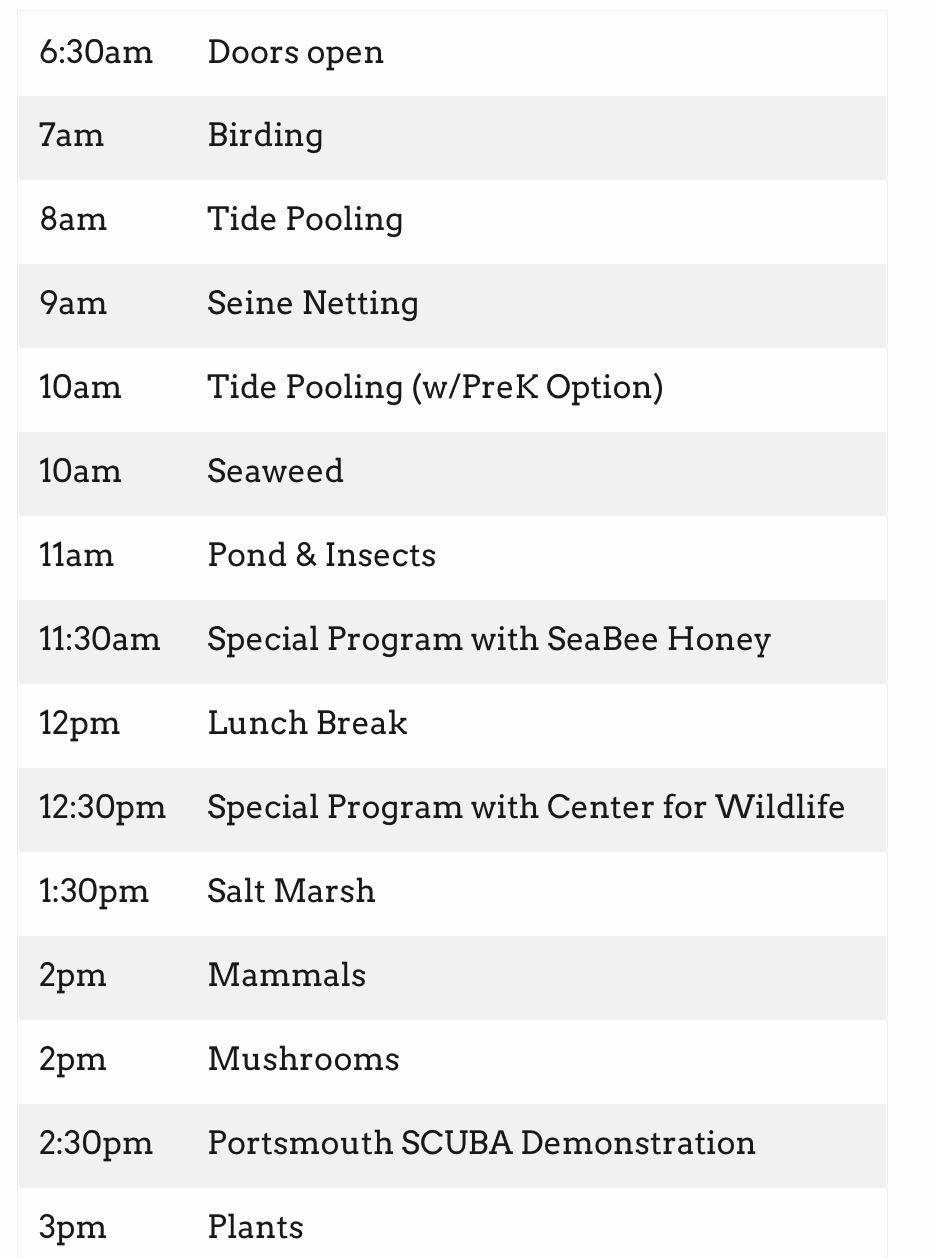
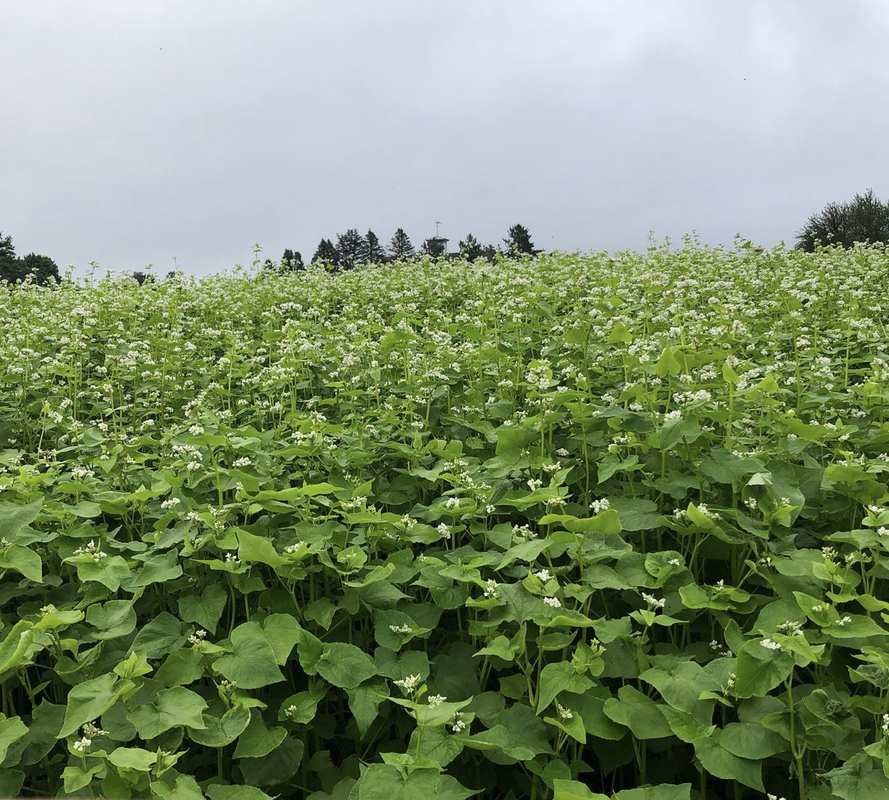
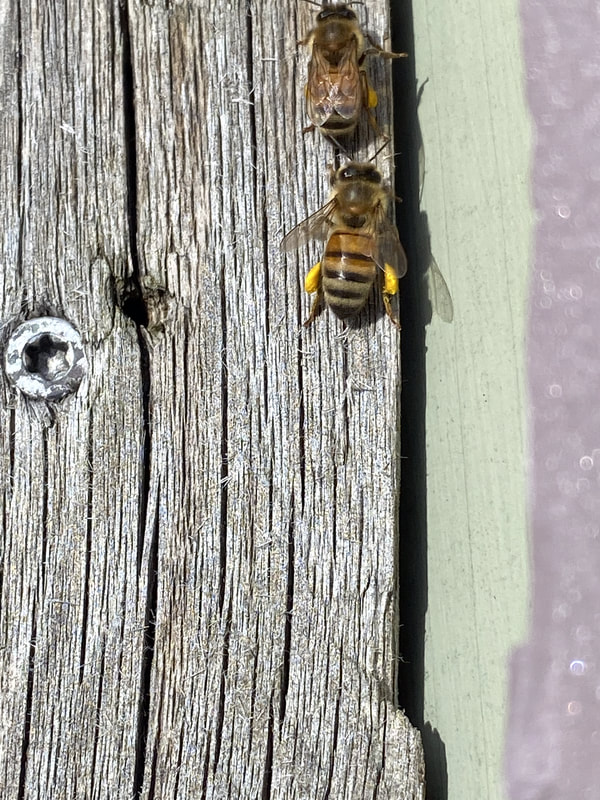

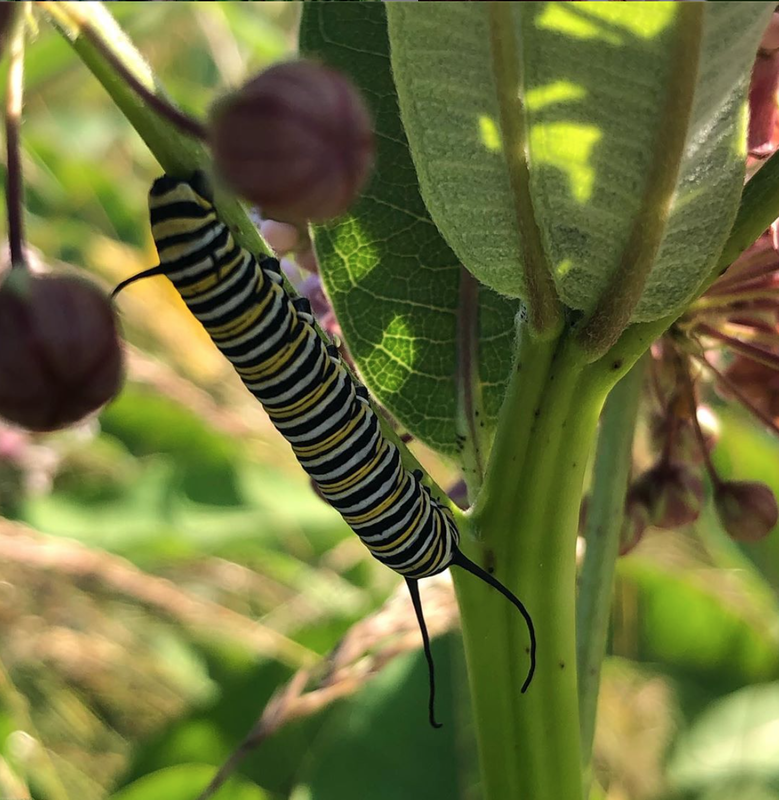
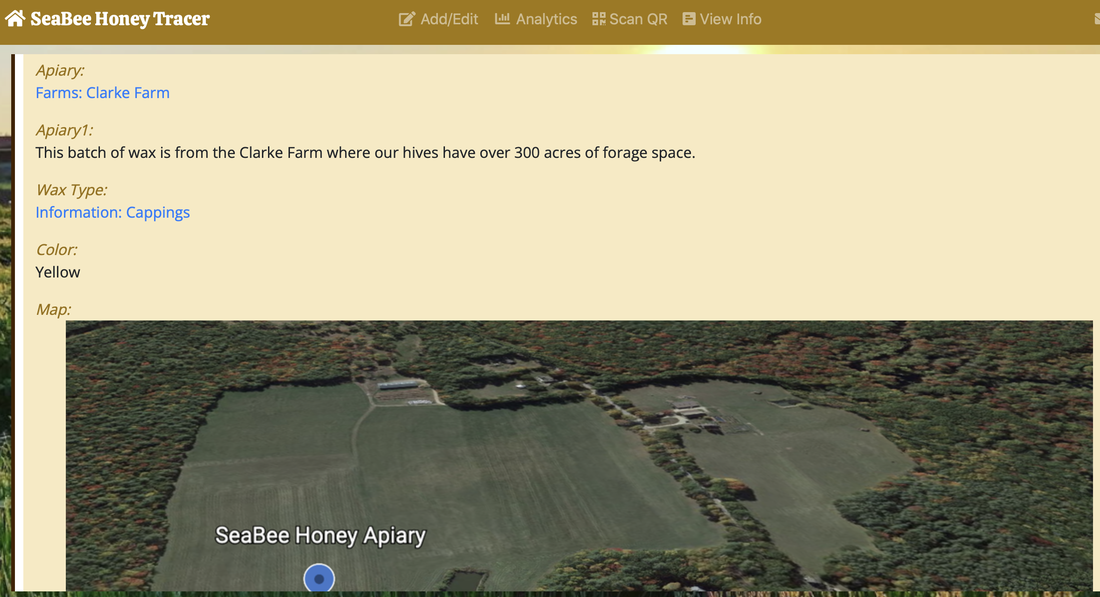
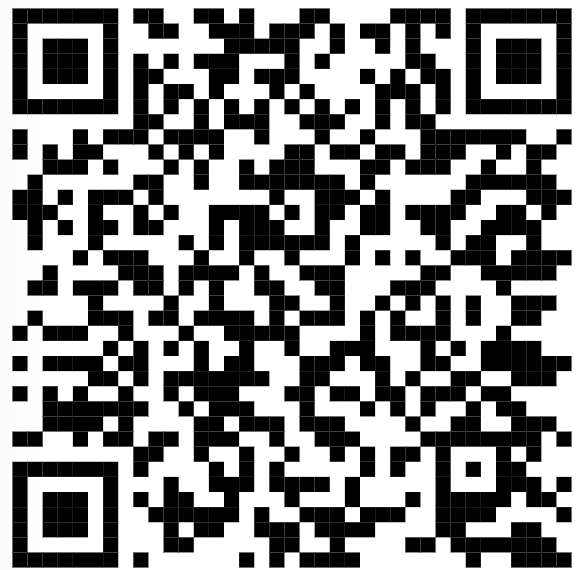
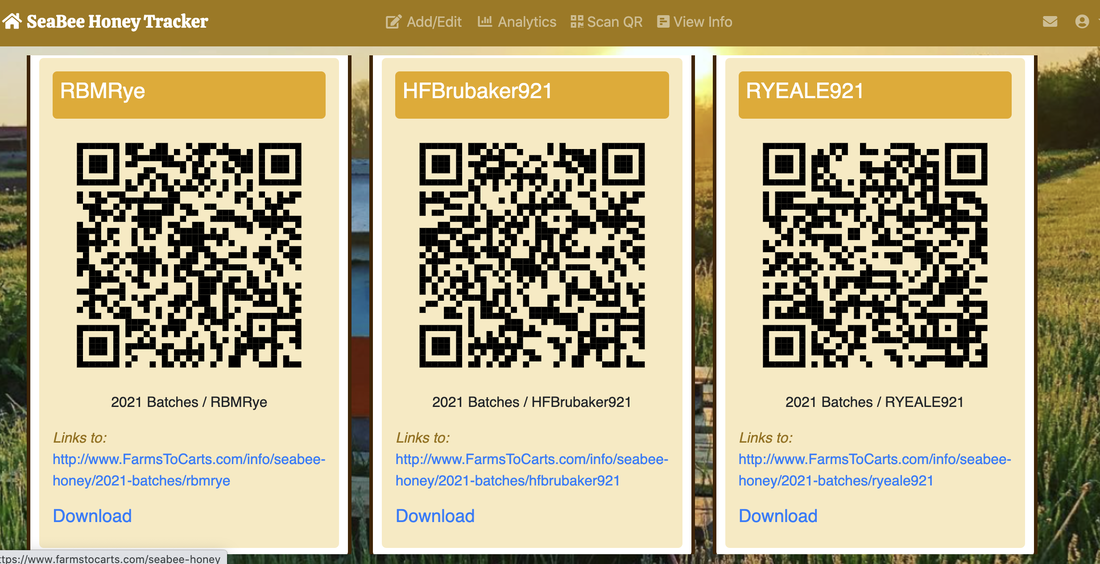
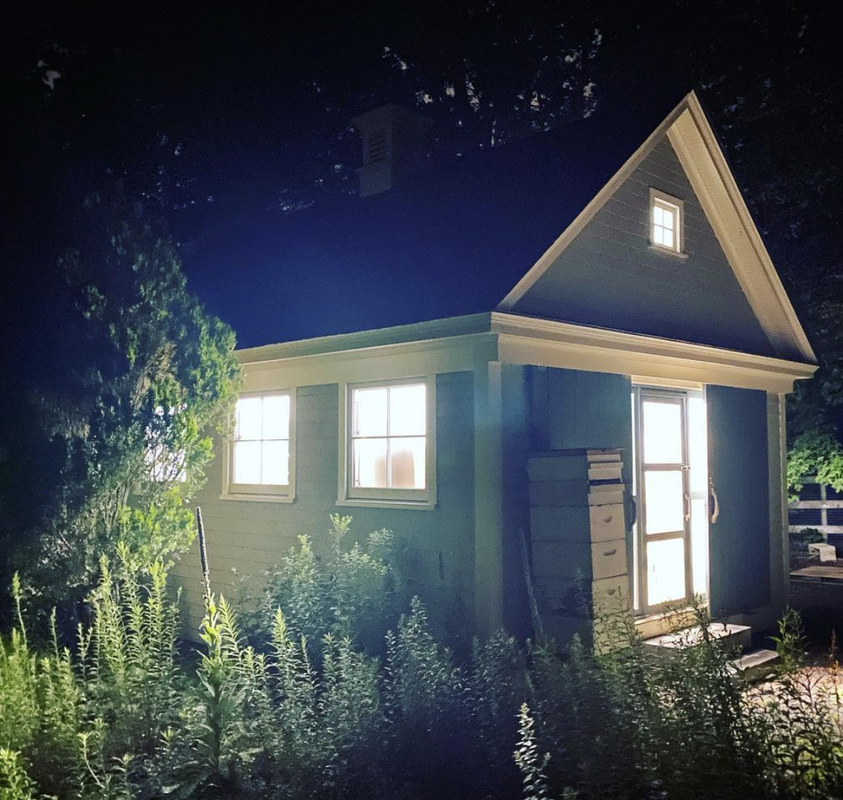

 RSS Feed
RSS Feed